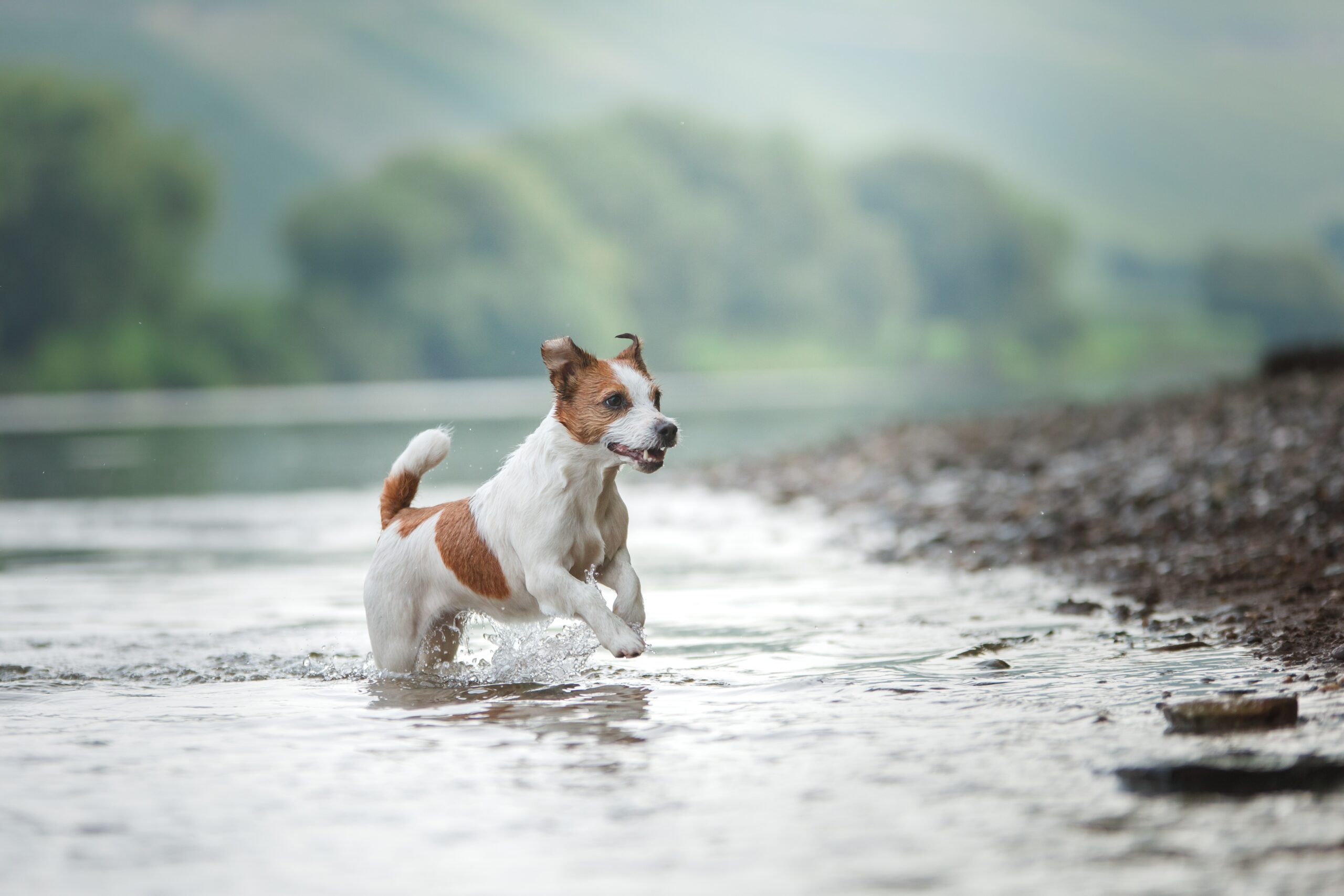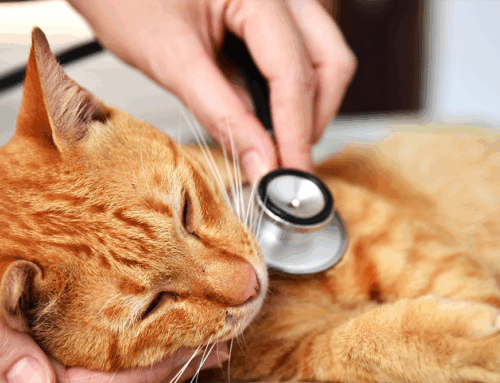Keeping Pets Safe Around Water: Drowning Risks, Algae, and Other Hidden Hazards
In Northern Arizona, lakes, rivers, and backyard pools are part of everyday adventures for pets. But fun days by the water can turn frightening in seconds. As a 24/7 specialty and emergency hospital, we see firsthand the dangers pets face around water, from toxic algae blooms to near-drowning events. By sharing what we’ve learned, we hope to help families recognize risks earlier and know that expert care is always available when the unexpected strikes.
Understanding Water Safety for Pets
Why It Matters
Water safety is more than knowing if your dog can swim. Northern Arizona’s diverse environments- mountain lakes, desert streams, and backyard pools- all present unique challenges. Cold temperatures, unpredictable currents, and seasonal algae blooms can turn a fun day into an emergency within minutes.
Every summer, veterinary emergency hospitals treat pets for preventable incidents like poisoning, trauma, or drowning. Even experienced swimmers can run into trouble, and clear-looking water is not always safe.
Preventing Drowning: Essential Tips
Life Jackets and Swimming Basics
Not all dogs are strong swimmers. Some breeds tire quickly or panic in deep or fast-moving water. If your pet is new to swimming, start gradually in a safe environment such as a pool.
A well-fitted life jacket provides extra security and allows you to lift your pet out with ease. There are many reasons your dog needs a life jacket, but the most important is that it can save a life when the unexpected happens.
Floating Long Lines for Extra Safety
A floating long line can be a literal lifesaver if your pet swims too far out or is caught in a current. These lightweight, buoyant leashes allow you to guide or pull your pet back to safety without entering the water yourself. Always ensure the line floats- otherwise, it can sink and tangle your dog’s legs. Use them only in open water without rocks, branches, or underwater obstacles that could snag the line.
Supervision and Choosing Safe Spots
Supervision is critical. Dogs can slip under the water silently, and just seconds can make the difference. When selecting swimming areas, check for hazards such as broken glass, sharp rocks, or fishing gear. Identify safe exit points before your pet enters the water. Don’t allow pets to jump into water where there are shallow rocks or tree branches, which could cause penetrating chest injuries or fractured limbs.
Special Considerations for Seniors
While swimming is a wonderful low-impact exercise for senior pets, it comes with dangers. Older pets are at higher risk due to arthritis, weakness, or slower recovery. Senior dogs need more breaks, careful monitoring, and shorter swims. They are also more prone to hypothermia and fatigue.
Algae Poisoning: A Hidden Water Danger
Recognizing Toxic Algae Blooms
Blue-green algae is one of the most serious risks in natural water. Under the right conditions, it multiplies quickly and produces toxins that can be deadly. Learn how algae affects pets.
Algae may appear as scum, mats, or discolored water in shades of green, brown, or red. It can smell earthy or musty. However, toxins may still be present in clear water, and they remain harmful even after algae die.
Exposure can cause vomiting, diarrhea, difficulty breathing, seizures, and collapse within minutes to hours.
Immediate Actions
If you suspect algae exposure, rinse your pet thoroughly to remove algae from fur and prevent grooming ingestion. Do not induce vomiting unless instructed by a veterinarian. Contact emergency veterinary services immediately. Quick treatment improves outcomes and may save your pet’s life.
Temperature and Sun Related Risks Around Water
Preventing Heatstroke
Pets playing in the sun are at higher risk of heatstroke. Warning signs include excessive panting, drooling, weakness, vomiting, or collapse. Dark-coated breeds, brachycephalic dogs, and thick-coated pets are especially vulnerable. Provide shade, cool rest breaks, and fresh drinking water. Avoid activity during peak heat hours. Even after cooling, pets with heatstroke remain at risk of secondary complications like clotting abnormalities, so any overheated pet should be evaluated promptly.
Sun Protection for Pets
The truth about pets and sunscreen is that some products are safe, but human sunscreen containing zinc oxide or PABA is toxic to pets. Use shade as your first line of defense, and apply only pet-safe sunscreen to vulnerable areas like the nose and ear tips when exposure is unavoidable.
Hypothermia in Cold Water
Northern Arizona’s mountain lakes and rivers often stay cold year-round due to snowmelt. Pets that swim for long periods in these conditions may develop hypothermia, even on warm days. Warning signs include shivering, stiffness, weakness, slowed heart rate, and lethargy. Small dogs, senior pets, and those with thin coats are especially susceptible. Dry pets off thoroughly after swimming, provide warm resting areas, and limit swim times in very cold water. Severe hypothermia can be life-threatening and requires immediate veterinary attention.
Infectious Diseases
Several dangerous infections thrive in or around lakes, rivers, and stagnant water sources, and pets often become exposed without owners realizing it.
Leptospirosis
Leptospirosis is a bacterial disease spread through contaminated water or the urine of infected wildlife. Dogs are especially at risk when drinking or swimming in standing water. Symptoms can include fever, vomiting, jaundice, muscle pain, and potentially life-threatening kidney or liver damage. Vaccination is strongly recommended for dogs in areas where leptospirosis is present.
Giardia
Giardia is a microscopic parasite found in contaminated water, including puddles, ponds, and streams. It causes gastrointestinal illness, leading to diarrhea, weight loss, and dehydration. Because Giardia can spread between animals and people, protecting your pet also reduces risk to your family.
Liver Flukes
In some areas, dogs may also be exposed to liver flukes, parasitic flatworms carried by snails and other hosts in wet environments. These parasites can migrate to the liver and bile ducts, causing chronic inflammation, bile obstruction, or secondary bacterial infections. Left untreated, liver flukes may lead to serious organ damage. Prevent your pet from eating any snails, bugs, fish, or animal feces while out.
Emergency Preparedness and Response
Northern Arizona’s climate adds unique hazards. Mountain lakes remain cold even in summer, creating hypothermia risk in some areas. Dry weather can worsen stagnant water conditions, making algae blooms more frequent. Monsoon storms can suddenly turn calm streams into dangerous currents or concentrate runoff pollutants into pools.
Recognizing Water Emergencies
Distress signs include frantic paddling, sudden stillness, or slipping below the surface. If this occurs, remove your pet, check responsiveness, and begin first aid if necessary. Learning CPR for dogs and cats could save your pet’s life.
Even if a pet appears fine after near-drowning, they may develop fluid in the lungs hours later, a condition known as “secondary drowning.” Watch for coughing, trouble breathing, or weakness and seek immediate care. Pets may also go into shock or show signs of respiratory distress.
When to Call VESCONA
Any water-related incident should be evaluated by a veterinarian. Our emergency team at VESCONA provides 24/7 critical care and advanced diagnostics to treat near-drowning, algae poisoning, trauma, and infectious disease complications. Do not wait for symptoms to worsen before seeking care.
Protecting Your Pet’s Water Adventures
If your pet shows distress after swimming- such as coughing, vomiting, collapse, or unusual behavior- seek emergency veterinary care immediately.
At VESCONA, our emergency team is available day and night to help in critical situations. For immediate assistance, contact us at (928) 779-5522. We are here 24/7 to keep your pet safe, healthy, and ready for more adventures.







Leave A Comment